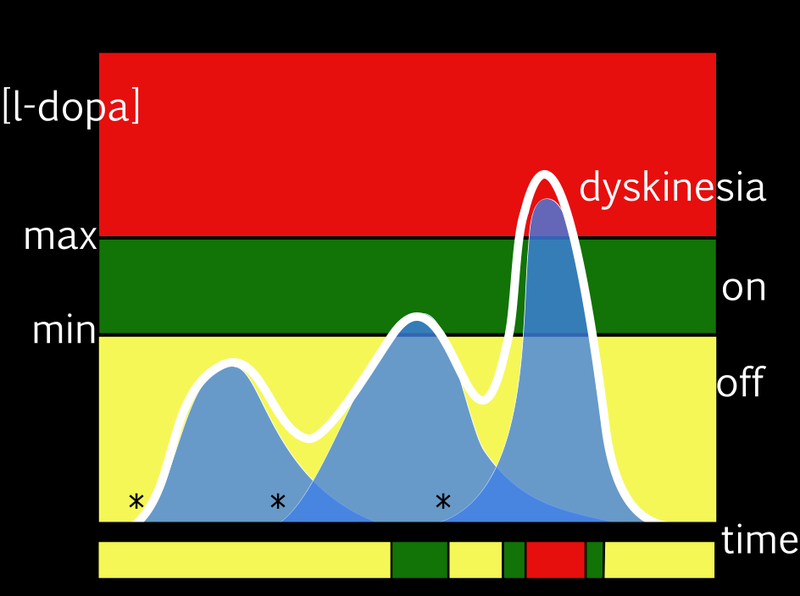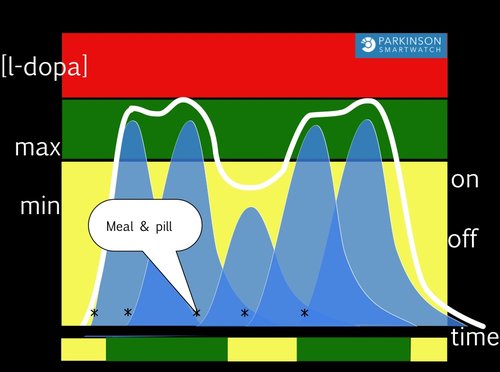Control levodopa pharmacokinetics

Disease severity determines the lowest effective l-dopa level. In the figure, this is the line between yellow and green, labeled 'min'. If l-dopa levels remain below this line, patients are under-treated, and usually experience their typical parkinson symptoms, so called off. This may include motor symptoms (e.g. stiffness, slowness, tremor) or non-motor symptoms ( e.g. altered mood or cognition, autonomic dysfunction).
High L-dopa levels, above the line between the green and the red zone, labeled 'max', occur where patients are over-treated. They usually experience motor symptoms like dyskinesia (i.e. involuntary choreodystonic movements) or may experience non-motor symptoms ( e.g. mania or hypersexuality).
Parkinson’s is a degenerative disease. The disease worsens over time. Therefore, medication needs to be adjusted from time to time. This requires a tailored medication scheme.
Choosing an effective treatment strategy, benefits a lot from the ability to reconstruct a presumed model of the pharmacokinetic profile of levodopa. In the example above, the color at the bottom bar is determined by the white line. But usually you don't know the exact levodopa levels. Now, try to do the inverse: try to create an approximation of the white line (the levodopa availability) from the course of the fluctuating symptoms (the diary, shown at the bottom bar), and the intake times ( the 3 *).
In this case, the first of three doses is too low. It could be adjusted by increasing the first dose, or adding a soluble levodopa dose at the same time. Reduction of the third dose may reduce the occurrence of dyskinesia. Meals influence uptake of levodopa. This example of 'wearing off' represents low intestinal levodopa uptake of the third gift, due to intake of pills together with a meal. To detect this simple but frequent cause of under-treatment, Parkinson smartwatch therefore records both intake times, and meals.

